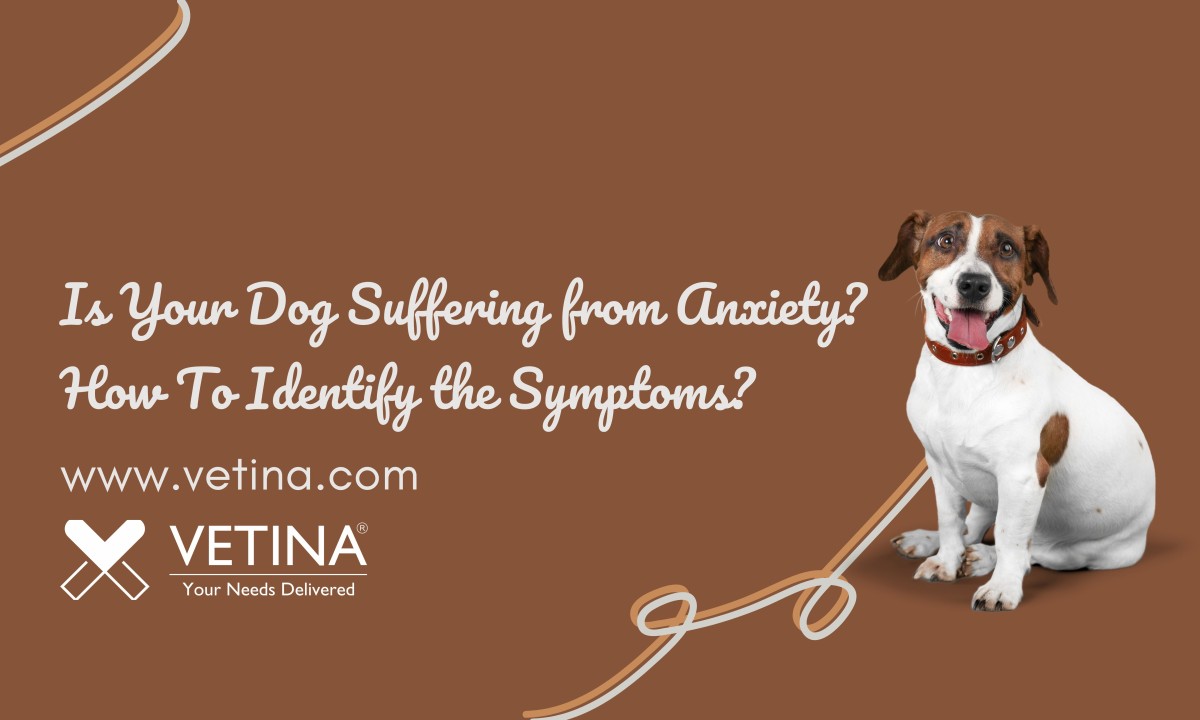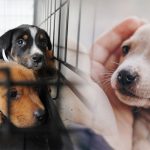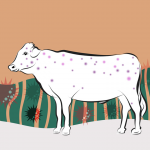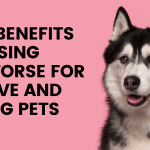Anxiety in dogs can be severe, and it only worsens when owners ignore their pets’ distress signals. Knowing the signs of anxiety in dogs and how to recognise them in your dog can help you provide a better quality of life for your pet over the long term.
How Does an Anxious Dog Look?
Most folks don’t know about dog nervousness. The dog may have a bowed back, tuck its tail, and lick excessively. Such signs indicate a nervous dog.
Another situation: Say you have taken your dog for a stroll. Suddenly, a fire engine passed, and your dog collapsed immediately. No matter how much you coaxed and cajoled, it won’t move, much less stand up and walk. It shuddered and kept its head down and howled intermittently. Be sure your dog has anxiety.
Or, for instance, do you have a barking dog? Does it bark constantly? And for one minute, it’s relaxing at your side; the next moment, it’s barking and racing around. The dog may pant or lick you, the couch, a toy, or the floor. It’s clear the animal is scared and is very, very anxious.
Or, sounds of fire crackers which makes dogs nervous and scared, separation anxiety due to which either dog becomes very aggressive or can become very calm.
Recognising the Tell-tale Signs of a Worried Dog
Any dog can get anxious anytime. Anxiety can be triggered by several situations, including but not limited to a traumatic experience, lack of socialisation, illness, pain, overheating, and separation from its owner.
Shaking, fleeing, not eating, heightened urination, whining, exiting the yard, and agitation are some of the behaviours associated with anxiety in dogs, which you probably already know. But some symptoms aren’t as obvious:
Constant Yawns
Your dog may be suffering from anxiety if they yawn a lot. After yawning, people often lick their lips and breathe heavily for a few seconds. The two most common signs of anxiety are these.
Constant Licking
Excessive licking is frequently a symptom of problems for anxiety in the dog. Licking releases endorphins in the brain, which relaxes the dog’s nervousness. Stressed dogs may lick excessively and forcefully. The same logic applies to licking or biting its feet or legs.
Whale Eyes
“Whale eye” is when a dog’s whites are apparent. Animals show stress in this way. Look a dog in the eyes while meeting it for the first time. If they’re white, give them space. Unpredictable animal behaviour may be due to excessive anxiety and stress.
A Quick, Shallow Breath
Anxiety and stress can also cause excessive or persistent shivering. Disease, pain, and anxiety all manifest themselves in similar ways in dogs. A similar pattern of breathing occurs at times of stress.
Disconnecting
Your dog may be experiencing anxiety or stress if it suddenly stops paying attention to you, another dog, or the group setting. If your dog suddenly wants to go to bed during a game, it’s better to honour its requests. It’s trying to rein in its anxiety. Don’t pick it up or cuddle it unless it comes to you and requests it. Don’t bother it when it naps; it needs to recharge.
Increased Barking and Wailing Beyond Typical Levels
One of the many external manifestations of anxiety is a heightened awareness of noise. If a dog has a negative reaction to a loud noise and continues to bark long after the noise has stopped, this could be a sign of anxiety.
Sudden Aggression
It’s not uncommon for dogs with anxiety to exhibit aggressive behaviour, even against their owners. Sometimes, anxious dogs will act aggressively out of the blue, with a growl or other display of hostility.
Running Away
Anxious dogs often react by running away when they feel this way. However, putting them behind bars may make things worse.
High Levels of Vitality
Hyperactivity and heightened energy levels are common symptoms of anxiety in dogs.
Frequent Defecation
Anxiety can cause them to have an urgent need to defecate, even if they are at home.
Destructive Behaviour
Anxiety often manifests in destructive behaviour, such as biting or breaking non-edible objects.
Constant Demand for Care and Attention
However, other dogs suffering from anxiety will act oppositely, desperately seeking human contact. There’s a chance they’ll climb up on people’s laps or demand more attention.
Hiding from Others
Particularly anxious canines benefit from being left alone. They try to avoid contact with humans and other animals and try to hide.
Finding Remedy
Mind Calming tablets from Vetina have proven to be a very effective way to help an anxious dog unwind and calm its nerves. Anxiety and other negative emotions are soothed with this medication containing an all-natural blend of calming herbs.
The availability of this medication has worked wonders in relieving these animals in distress. It alleviates their anxiety and depression. Combining organic Chamomile, Valerian root, and Ginger root, canine anxiety is eased.
Method of Operation
Chamomile
It has been scientifically shown to reduce stress. There is an overall feeling of calmness brought on by this. Apigenin, the active ingredient in chamomile, operates as an anxiolytic on the brain and neurological system.
Root Valerian
Helps in treating anxiety and the gastrointestinal distress . It also helps calm the nervous system.
Ginger
It works to calm anxious nerves. Antidepressant and anxiolytic effects can be attributed to ginger This is also useful for calming a queasy stomach or preventing motion sickness while travelling.
Final Thoughts
Anxiety and stress-free living is the best thing you can give your dog. You and your vet should look into why your dog is acting strangely. Vetina, the owner, talks to you to alleviate your pet’s stress. We’ll determine what’s best for your pet and give them the necessary therapy. Moreover, what’s even better? Our website www.vetina.com makes it easy for you to get in touch with us without leaving your house.





